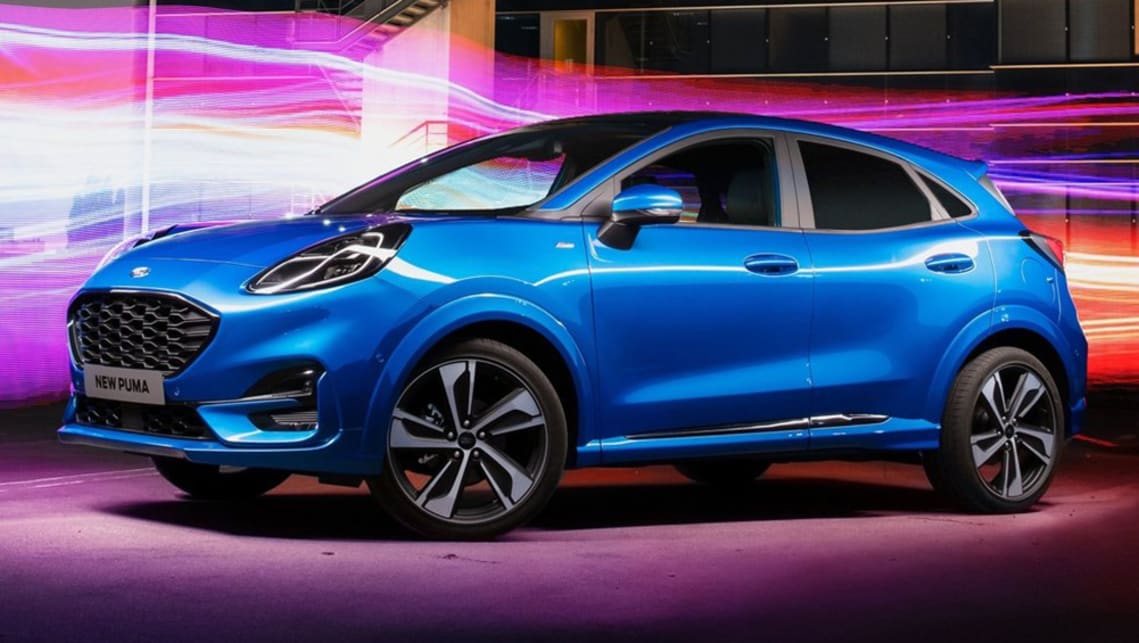Your cart is currently empty!

New Ford Puma 2020 vs the world: Is this a Hyundai Kona and Mazda CX-30 beater?
Ford Australia is hoping to make a splash in the small SUV space this year with the introduction of its European-sourced Puma small SUV, but does it have what it takes to be competitive in such a crucial market?
Looking to succeed where the ageing and likely-soon-to-be-discontinued EcoSport has faltered, the Puma looks striking and stylish, which could draw the eye of aesthetically minded buyers looking at a Hyundai Kona or Toyota C-HR.
Driving the front wheels, the Puma’s 92kW/170Nm 1.0-litre EcoBoost turbo-petrol three-cylinder engine is also more than a match for the Toyota’s 85kW/185Nm turbo-petrol 1.2-litre and Hyundai’s 110kW/180Nm 2.0-litre four cylinder – both of which also drive the front axle.
Buyers could also cross shop the Ford Puma with the all-new 114kW/200Nm Mazda CX-30 and 110kW/180Nm Kia Venue.
Kicking off from $29,990 before on-road costs though, the Ford is definitely pricier than most its competitors, with the cheapest Seltos and Kona starting at $24,990 and $24,300 respectively.
The CX-30 ($29,990) and now-automatic-only C-HR ($29,540) however, are a bit closer to Puma is pricing, with all three positioned as more premium and sophisticated offerings.
Standard equipment on the Ford is also expansive, which goes someway in justifying its price, and includes 17-inch wheels, LED headlights, five driving modes, seven-speaker sound system, wireless smartphone charger, satellite navigation, push-button start, and an 8.0-inch Sync3 multimedia with Apple CarPlay/Android Auto.

Safety gear is also extensive, with autonomous emergency braking with pedestrian detection, lane-keep assist, traffic sign recognition, driver attention alert, cruise control, rear parking sensors and a reversing camera all included.
Mazda’s CX-30 also offers much of the same equipment as the Puma, but sports a larger 8.8-inch multimedia touchscreen, adaptive cruise control and blind-spot monitoring – the latter two of which are locked behind a $1500 Park Pack option in the Ford.
As for the Toyota C-HR, it matches the Ford in specification but also gains adaptive cruise, dual-zone climate controls and front parking sensors (part of the Puma’s Park Pack).
So, Ford can’t claim to be the most powerful or feature packed, but the Puma is certainly one of the most practical small SUVs on the market, boasting 376L litres of storage space with all the seats in position.

That’s just one litre less than the Toyota C-HR and 59L greater than the CX-30.
Australian-spec Puma’s miss out on the MegaBox false floor of overseas models in favour of a spare wheel, which adds 80L.
Also compromising the Puma’s positioning though, could be the new-gen Escape mid-size SUV that starts at $35,990.
Though we’ll have to wait until later this year to get behind the wheel of the all-new Puma, through its pricing and positioning, Ford is clearly confident it’s latest small SUV will be a winner.
by
Tags:
